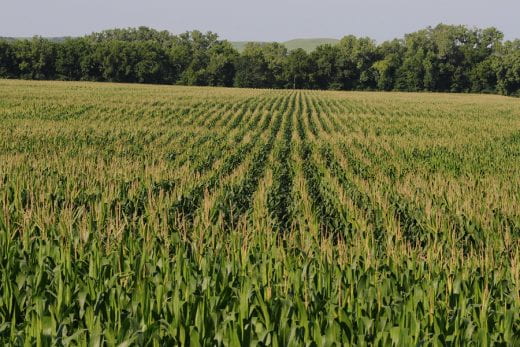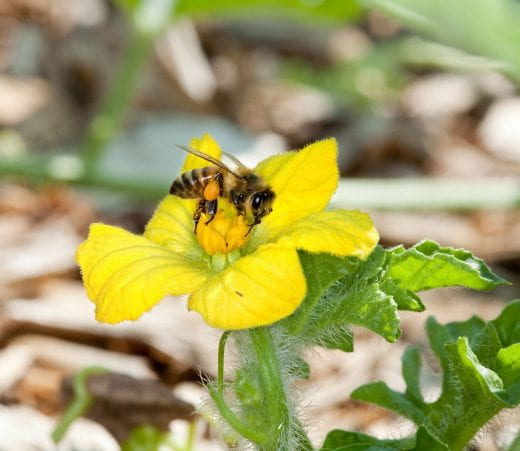Welcome to Better Kansas, where every Thursday we shed light on events, resources and other information designed to make your life, businesses, communities and state better. Don’t forget to hit subscribe! – Mary Lou Peter mlpeter@ksu.edu
Better Living, Better Communities
 IT’S SO GOOD TO DRIVE THROUGH A COMMUNITY and see thriving businesses, whether a store that’s taken an innovative approach or a restaurant that serves great food AND has figured out a way to market it. Running your own business, however, leaves little time to communicate with your peers in other communities who have similar challenges or successes, or ways to learn about technology or legislation that may affect your business. To support small businesses in communities across Kansas, First Friday e-Calls are available the first Friday of the month. It’s professional development information without leaving your business and the only cost is the time it takes to participate. Previous First Friday e-Calls are archived, and topics run the gamut from “Funding Options for Small Businesses” to “Effective Use of Social Media for Rural Organizations”; “Cyber Security Threat to Small Business”; “Innovative Rural Business Models”; “Business Valuation and Business Transition Planning” and many more. Take a look at the website or send an email to nkdaniels@ksu.edu to learn more or to be added to the notification list about upcoming e-Calls.
IT’S SO GOOD TO DRIVE THROUGH A COMMUNITY and see thriving businesses, whether a store that’s taken an innovative approach or a restaurant that serves great food AND has figured out a way to market it. Running your own business, however, leaves little time to communicate with your peers in other communities who have similar challenges or successes, or ways to learn about technology or legislation that may affect your business. To support small businesses in communities across Kansas, First Friday e-Calls are available the first Friday of the month. It’s professional development information without leaving your business and the only cost is the time it takes to participate. Previous First Friday e-Calls are archived, and topics run the gamut from “Funding Options for Small Businesses” to “Effective Use of Social Media for Rural Organizations”; “Cyber Security Threat to Small Business”; “Innovative Rural Business Models”; “Business Valuation and Business Transition Planning” and many more. Take a look at the website or send an email to nkdaniels@ksu.edu to learn more or to be added to the notification list about upcoming e-Calls.
 THINK OF ALL OF THE WAYS OUR LIVES HAVE BECOME CONVENIENT, the drive-throughs, the remote controls, and now the grocery delivery! But is that convenience always a good thing? A decline in physical activity is especially a problem for older adults, less than 20% of whom engage in adequate physical activity. That loss of muscle mass can sneak up on us and post-menopausal women can lose 1%-2% of their bone mass annually. To help get us back to where we should be, many K-State Research and Extension offices offer the Stay Strong, Stay Healthy program. Participants meet for one-hour sessions, twice a week for eight weeks. Activities include warm-up exercises, strengthening exercises with or without weights, and cool-down stretches. Class members are encouraged to do the exercises on their own once more per week. Benefits? A potential to restore bone density and reduce the risk of fractures, plus a decrease in arthritis pain, weight maintenance, and a reduction in the risk of diabetes, heart disease and depression.
THINK OF ALL OF THE WAYS OUR LIVES HAVE BECOME CONVENIENT, the drive-throughs, the remote controls, and now the grocery delivery! But is that convenience always a good thing? A decline in physical activity is especially a problem for older adults, less than 20% of whom engage in adequate physical activity. That loss of muscle mass can sneak up on us and post-menopausal women can lose 1%-2% of their bone mass annually. To help get us back to where we should be, many K-State Research and Extension offices offer the Stay Strong, Stay Healthy program. Participants meet for one-hour sessions, twice a week for eight weeks. Activities include warm-up exercises, strengthening exercises with or without weights, and cool-down stretches. Class members are encouraged to do the exercises on their own once more per week. Benefits? A potential to restore bone density and reduce the risk of fractures, plus a decrease in arthritis pain, weight maintenance, and a reduction in the risk of diabetes, heart disease and depression.
DO YOU DREAD GETTING THOSE LATE SUMMER ELECTRIC BILLS as much as I do? Thank goodness for electricity and air conditioners, but some days they can barely keep up with our heat and humidity. Air conditioners use about 5% of all electricity produced in the United States, costing homeowners more than $29 billion a year. Save on cooling costs by installing a programmable thermostat and replacing your home’s air filter. Take a look at more tips to beat the heat or listen in.
Better Farming, Ranching and Gardening
ONE OF MY FAVORITE THINGS TO DO THIS TIME OF YEAR is to spend time on my patio with my flowers, something good to read and yes, the bees, flitting from flower to flower as though they’re trying to decide which classmate to ask to the prom. As a child I was afraid of bees, but that was when I was ignorant about the crucial role they play in our lives. Nearly 75% of the world’s food crops depend on honey bees and other pollinators. But bee populations have been declining and there is evidence to suggest that humans’ inappropriate use of pesticides may be part of the problem. For a closer look, including great photos, check out Pesticides and Bees. So yes, I’m happy to share my space with the bees. Certain other crawly creatures not so much, but I’m really trying to stick with the idea, can’t we all just get along?
SORGHUM (AKA MILO) IS ONE OF KANSAS’ MOST IMPORTANT CROPS, partly for its drought-resistant ways. It’s a key ingredient in livestock rations and increasingly food products, not to mention other uses. But some insects, such as chinch bugs and sugarcane aphids among others, also love sorghum and can take more than their share from a farmer’s yield (and the bottom line). For a whole lot of practical, research-based information on how to control the pesky bugs, take a look at Sorghum Insect Management. And for a radio interview on sugarcane aphids in sorghum, plus other ag related topics listen to Agriculture Today .
 IF YOU EMBRACE THE OPPORTUNITIES AND CHALLENGES of farming in southwest Kansas, there’s a spot (or many spots) for you at the K-State Southwest Research-Extension Center Fall Field Day on Thursday, Aug. 22 in Garden City. It’s a place to come learn what scientists have found, including what’s working well and what isn’t in this part of the state, with plenty of opportunity to ask questions of researchers and your fellow producers. And this is one of those days where you tour the fields and see for yourself what the researchers are working on. Topics range from weed control, summer annual forages, irrigation efficiency, Bt corn refuges, beneficial insects, and several on control of the weed, kochia, that can cut crop yields by more than half. Industry exhibitors will be on site and did I mention, there’s lunch?!
IF YOU EMBRACE THE OPPORTUNITIES AND CHALLENGES of farming in southwest Kansas, there’s a spot (or many spots) for you at the K-State Southwest Research-Extension Center Fall Field Day on Thursday, Aug. 22 in Garden City. It’s a place to come learn what scientists have found, including what’s working well and what isn’t in this part of the state, with plenty of opportunity to ask questions of researchers and your fellow producers. And this is one of those days where you tour the fields and see for yourself what the researchers are working on. Topics range from weed control, summer annual forages, irrigation efficiency, Bt corn refuges, beneficial insects, and several on control of the weed, kochia, that can cut crop yields by more than half. Industry exhibitors will be on site and did I mention, there’s lunch?!
—
For more resources and activities, check with the K-State Research and Extension office in your area. Check out our other blogs and subscribe to our weekly emails here: blogs.k-state.edu/ksrenews.






